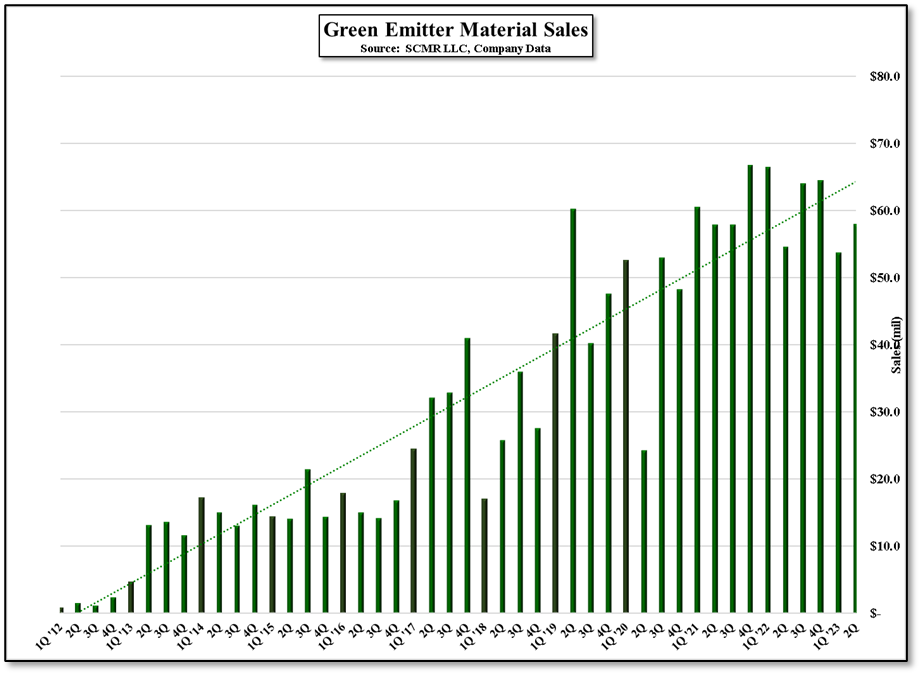Stripes & Stacks
While the techniques for creating small and large OLED displays are different, they both have to compete with other display technologies, particularly LCD and its more recent kin, Mini-LED TV. OLED TVs tend to have richer colors and higher contrast than LCD TVs but they tend to be less bright than LCD TVs, and are more expensive to produce, so large panel OLED producers are always looking for ways to improve brightness. There are micro-lenses that can be used to pull more light from the display and dozens of other techniques that will work toward improving brightness, but the most important focus for improving large panel OLED display brightness are the emitting materials themselves.
OLED material producers are constantly working to improve characteristics, and while new OLED materials with better characteristics are always being developed, brightness improvements are often a tradeoff against material lifetime or color accuracy and cost, yet the competitive nature of the display business forces OLED display producers to keep making improvements to counter the competition. One way of doing such is to use more OLED material. LG Display’s original WOLED displays were formed of three stacks of OLED materials in layers. Each stack was composed of blue and yellow/green emitters. That combination produced white light, which was then passed through a color filter of red, green, and blue phosphors, each removing the opposing colors. The prolem with this method is that it is subtractive and results is considerably less light reaching the viewer.
Over time a red emitter was added to the stacks to improve the quality of the white light, but in order to maintain brightness after the color filter, a blank space is left on the color filter, allowing a white sub-pixel to be added to each pixel. While this improved the overall brightness, it also washed out some of the colors. LG Display has now decided to add a fourth stack to its upcoming displays by separating some of the emittercolors in the stacks into there own stacks. This concept adds additional emitter material, which adds to the light outrput (brightness) and allows for more control over the ‘tuning’ of each layer.
Samsung Display (pvt) has a different method for producing large panel OLED displays. They coat the entire panel with OLED emitter materials, in the same way LGD does, but the combination of materials produces blue light rather than white light. The blue light is passed to red and green quantum dots, which shift the blue light to red and green, and a space allow the blue light to pass through unchanged. While there is some loss from the qualntum dot conversion, they convert rather than filter, so a white pixel is not needed and the colors tend to be truer.
That said, LCD displays are based on backlights and OLED displays are self-generating, so regardless of the method used, OLED displays tend to be less bright, and driving them harder with a higher current just reduces their lifetime, so Samsung Display is doing the same thing as LG Display and adding an additional stack of blue light generating OLED material to its QD/OLED displays, starting with its smaller OLED monitors. Consumers will benefit from the extra stacks from both producers, as will the OLED material suppliers, although the uptake will not be overnight, however the bigger question will be how the additional stack will affect the price of the displays. OLED emitter materials are expensive so we expect producers will have to eat the cost at the onset, but if the concept of adding stacks makes enough difference that consumers are more comfortable with OLED, than it will be worth the cost. We expect the answer will take at least a year to surface, and while the idea of adding stacks might seem nuanced to the average user, if it is able to increase the brightness of an OLED display by 20% or 25%, it will make a big difference in the battle between OLED and LCD over time.






 RSS Feed
RSS Feed